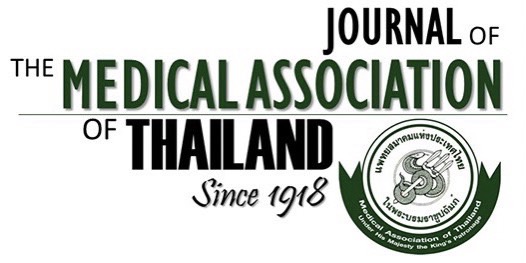Clinical Predictors of WHO Grades, Subtypes, and Atypical Histopathological Features of Meningiomas
Inthira Khampalikit MD*, Pornsuk Cheunsuchon MD**, Bunpot Sitthinamsuwan MD*
Affiliation : * Division of Neurosurgery, Department of Surgery, Faculty of Medicine Siriraj Hospital, Mahidol University, Bangkok, Thailand ** Department of Pathology, Faculty of Medicine Siriraj Hospital, Mahidol University, Bangkok, Thailand
Background : WHO grade I meningiomas usually have an indolent course, while high-grade (grades II to III) tumors are
associated with a more aggressive natural course.
Objective : To investigate clinical predictors of WHO grade, subtype, and atypical features of meningiomas.
Material and Method: Correlations between clinical variables and WHO grades, meningioma subtypes, atypical features of
tumor, brain invasion, degree of connective tissue content, and microscopic calcification were analyzed.
Results : Of 233 meningiomas, 196 (84.1%) and 37 (15.9%) were WHO grade I and II, respectively. There were no WHO
grade III tumors in the present study. Factors associated with a possibility of WHO grade II meningioma included younger
age (p = 0.025), larger tumor size (p = 0.005), peritumoral brain edema (p = 0.001), and isosignal intensity of tumor on
T2WI (p = 0.011) and FLAIR image (p<0.001). Hyposignal and hypersignal tumors on T2WI were correlated with transitional
and meningothelial subtypes, respectively (p = 0.001). Meningiomas with soft consistency were likely to be fibrous subtype
and associated with a low level of connective tissue. Radiographic predictors of atypical histopathologic features were
presence of cystic component, peritumoral edema, bony erosion and absence of CFS cleft between tumor and brain, and
homogeneous enhancement of tumor on T1WI. Tumor isosignal intensity on T2WI and FLAIR images could forecast the
appearance of atypical features and brain invasion in histopathology. Small size, spinal location, and hyposignal intensity of
tumors on T2WI were correlated with dense microscopic calcification.
Conclusion : Various clinical factors can be used to predict high-grade meningioma, tumor subtype, and microscopic atypical
features - all of which are useful in tumor management.
Keywords : Meningioma, WHO grades, Subtypes, Atypical features, Connective tissue content, Calcification



